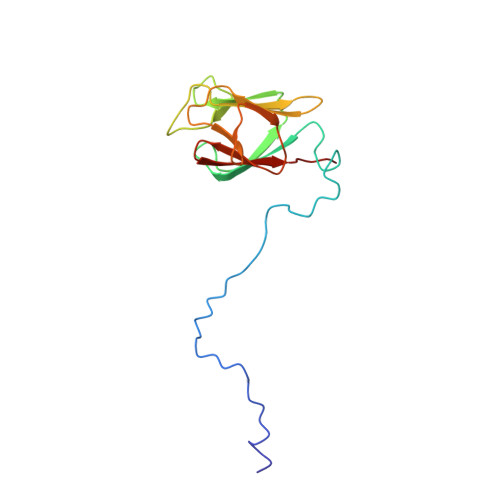Dynamic and Structural Characterization of a Bacterial FHA Protein Reveals a New Autoinhibition Mechanism.
Barthe, P., Roumestand, C., Canova, M.J., Kremer, L., Hurard, C., Molle, V., Cohen-Gonsaud, M.(2009) Structure 17: 568-578
- PubMed: 19368890
- DOI: https://doi.org/10.1016/j.str.2009.02.012
- Primary Citation of Related Structures:
2KB3, 2KB4 - PubMed Abstract:
The OdhI protein is key regulator of the TCA cycle in Corynebacterium glutamicum. This highly conserved protein is found in GC rich Gram-positive bacteria (e.g., the pathogenic Mycobacterium tuberculosis). The unphosphorylated form of OdhI inhibits the OdhA protein, a key enzyme of the TCA cycle, whereas the phosphorylated form is inactive. OdhI is predicted to be mainly a single FHA domain, a module that mediates protein-protein interaction through binding of phosphothreonine peptides, with a disordered N-terminal extension substrate of the serine/threonine protein kinases. In this study, we solved the solution structure of the unphosphorylated and phosphorylated isoforms of the protein. We observed a major conformational change between the two forms characterized by the binding of the phosphorylated N-terminal part of the protein to its own FHA domain, consequently inhibiting it. This structural observation corresponds to a new autoinhibition mechanism described for a FHA domain protein.
Organizational Affiliation:
Centre National de la Recherche Scientifique Unité Mixte de Recherche, Montpellier, France.














